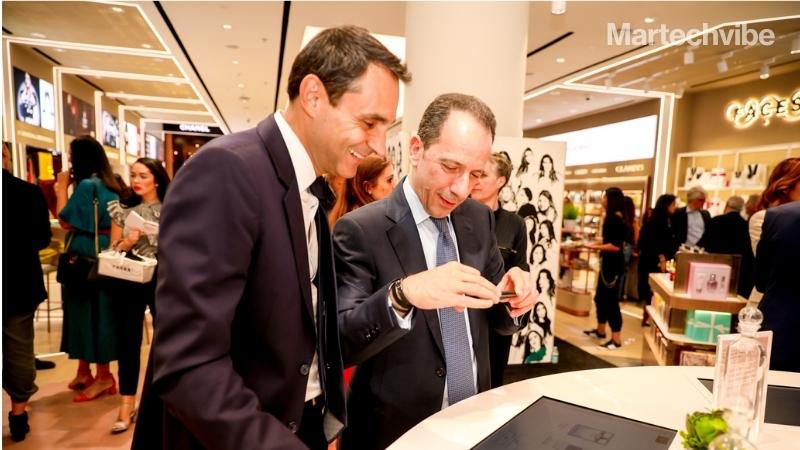Everyone Owns a Piece of CX at Chalhoub
Martechvibe spoke to Ilaria Buonpane, Head of CX and strategic marketing, Chalhoub Group. The group is the region’s foremost name in luxury retail, beauty, and fashion. The customer experience (CX) is a cross-functional effort for any organisation. How does the Chalhoub Group view it? Customer Experience is an integral part of Chalhoub Group vision to […]
Topics
What to Read Next
- TripleLift Announces Partnership with Attain to Unify Context and Commerce
- Seedtag Partners with IRIS.TV to Expand Contextual Signals for CTV Targeting
- Magnite, Cognitiv Announce Deep Learning Integration for Real-Time Curation
- Dscout Announces Integration with HeyMarvin
- Comscore Launches Program-Level Capabilities within CCM

Martechvibe spoke to Ilaria Buonpane, Head of CX and strategic marketing, Chalhoub Group. The group is the region’s foremost name in luxury retail, beauty, and fashion.
The customer experience (CX) is a cross-functional effort for any organisation. How does the Chalhoub Group view it?
Customer Experience is an integral part of Chalhoub Group vision to become a hybrid retailer, bringing luxury experiences to customers’ fingertips everywhere. And indeed, our passionate teams drive this vision forward because it is considered a company-wide effort that requires collaboration across all the teams: from marketing to retail, digital, eCommerce, Data, HR and other areas of the business. Everyone owns a piece of CX at Chalhoub! And everybody plays a crucial role in delivering CX and delighting our customers to offer them exceptional experiences.
As more shoppers go online, their expectations rise too. What is your strategy to delight them?
I believe that we live in a “mono-channel” world. The shopping experience is simultaneously online and offline. It’s about creating a platform that allows the consumer to activate whatever parts of this experience they choose. Our plan to delight our customers encompasses several efforts across the entire value chain: better last mile for faster delivery, improved User Experience, leverage of Data and insights to drive personalisation, elevated “Human touch”, and clienteling delivered by our store staff across all touchpoints.
Furthermore, we are accelerating our in-store digital experience that engages customers & seamless offline/online shopping. We are shifting our attention from a features-and-benefits approach to a focus on immersive shopping and customer experience.
What are the opportunities for retailers post COVID?
The acceleration of e-commerce, combined with consumer behaviour changes, is forcing retailers to evolve physical stores’ role. And this was even before COVID-19. The pandemic was only an accelerator to this revolution. The store’s role will inevitably change from the point of sales to the point of touch, a 360° change in the approach to customers.
The modern store does not exist to facilitate transactions only but to allow customers to engage with products, develop loyalty, spread brand awareness, and offer memorable experiences. The store should serve as well pragmatic functions such as online distribution and fulfilment capabilities.
The store of the future is unlike their predecessors; it’s smaller and experience-driven. Shoppers are encouraged to take photos, sit down, and immerse themselves in the brand’s environment. The stores allow customers to order products that are not available at the location and return products purchased online.
Today, stores must be treated as:
MARKETING CHANNEL, they are our running Ad, where our customers can learn about the brands and interacts with our products
SERVICE & EXPERIENCE HUB, COMMUNITY HUB through events, masterclasses, educational content, localisation, collaboration with local artists… the aim is to build a community around our physical channel.
The role of sales associates is evolving, and the expectations we have from them are different today. We have to provide our frontliners with improved technology to serve customers better. Providing real-time stock management, product storytelling, customer data capture, and clienteling is vital to building a long-lasting relationship with our customers.
 What is an effective personalisation strategy? What tools have found to be most effective?
What is an effective personalisation strategy? What tools have found to be most effective?
Personalisation is a crucial element to stay relevant in today’s market. Leveraging data, AI, and machine learning are crucial to understand our customers better and deliver more personalised journeys.
Clienteling solutions are also effective to drive 1:1 communications and interactions. We need to redesign the customer experience with our customers’ new fears, concerns, priorities, and needs in mind. We are working hard to collect, analyse, and generate insights from customer data and turn them into actionable strategies that personalise experiences that drive loyalty and sales.
AR lets online shoppers virtually try on clothing, makeup or eyeglasses. Has the trend caught on amongst the Middle East customers?
For luxury brands and retailers, AR’s integration and use come down to one thing: creating experiences and delighting customers. Technology is being used to enhance brand and store experiences while treating customers to a compelling, personalised retail journey across various platforms. On an international level, we’ve seen many brands across beauty and fashion sectors implementing AR solutions. This trend is also rising locally and regionally. Still, brands have to look at the local consumer’s needs and expectations, who are more concerned about privacy – hence brands need to make sure customers are sharing their pictures and data in a safe environment.
Makeup, clothes and glasses, virtual try-on, skincare analysis tool are all tools to improve customer’s online decision making – the necessity to implement these tools is growing in the time of COVID. But I think that, especially in this region, the store staff’s support and expertise (beauty advisors, skincare consultants, etc.) is essential to add a “human touch” to the digital experience. AR isn’t replacing human work; it supports building meaningful experiences for our customers by enabling personalisation and tailor-made solutions.









































































































